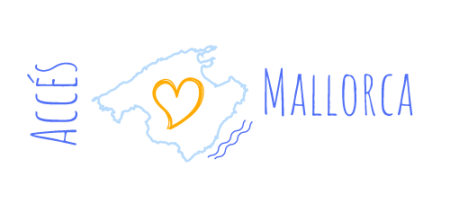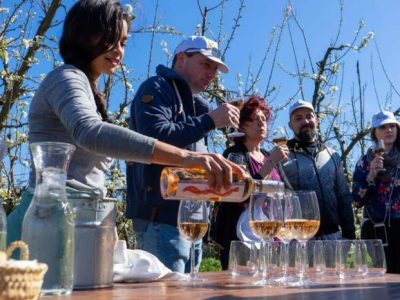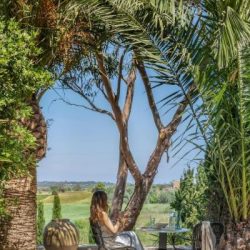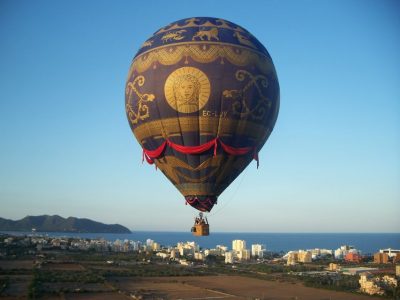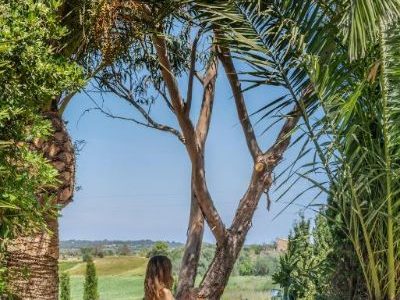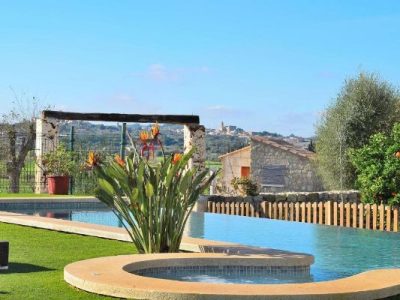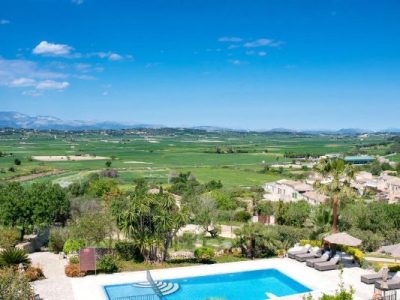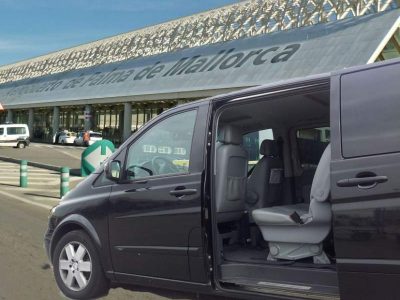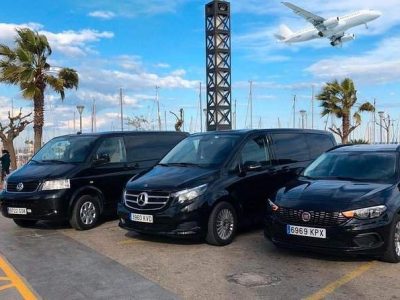All your holiday planning needs in one place, letting you book direct and benefit from official online rates
- Places To Go
- Things To Do
What’s Your Interest?
Traveling with kids
- Blog
Maria de la Salut, Mallorca, Things to do and see, hotels, market
The surroundings around Maria de la Salut are characterized by rural idyll; vineyards, almond groves and orchards, which through the four phases of the year cast new colors over the landscape.
- This is where I want to go!
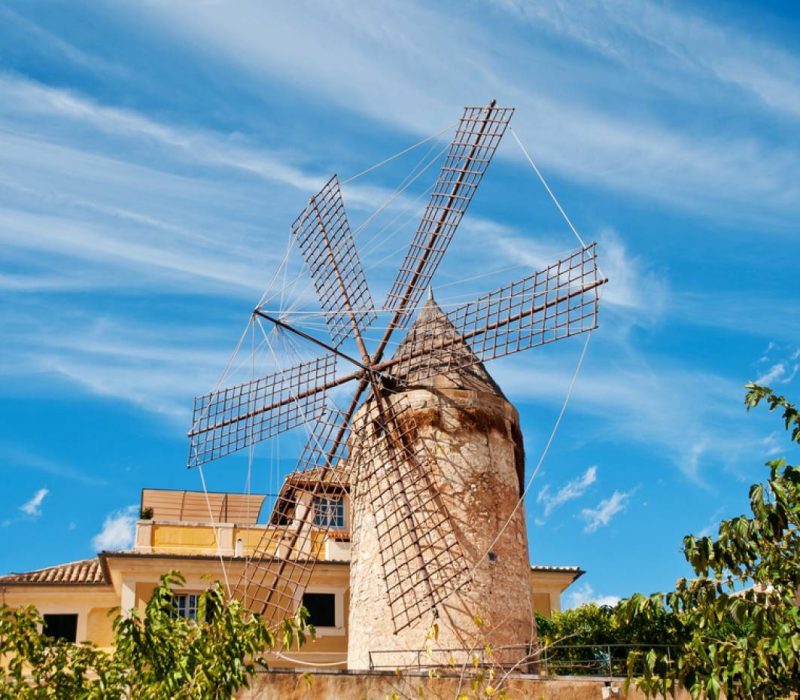
Why visit Maria de la Salut
Things to do in Maria de la Salut
Attractions may be right on the verge of exaggeration, but you will find some beautiful examples of rural architecture that characterize these rural areas of Mallorca.
Església de Maria
The parish church in Maria de la Salut stands beautifully on the highest point of the village. Although the church may look primitive at first glance, there are a myriad of beautiful treasures and decorations to be found as soon as you get close and inside. In particular, you will notice the fourth chapel on the left, which bears the image of Julià (Julian) Font of Roig, son of the city and co-founder of the Dominican convent in Manacor, and generally an important figure in the history of Maria de la Salut.
Finca Son Roig
Finca Son Roig is a historic manor house from the 16th century, which i.a. was the birthplace of one of the village’s eldest sons, Julian Font i Roig, co-founder of several monasteries in Mallorca. Font in Roig’s penetrating reverence and generosity has given him status as a saint on the local grounds.
ROAD CYCLING
Cycling is one of the hottest leisure activities and Mallorca is the perfect place for doing it. The area of Maria de la Salut connects miles and miles of asphalted country roads perfect for spinning pedals.
Ca’s Metge Monjo
House of a former doctor of Maria de la Salut. The house has been transformed into a nice family-driven restaurant.
IMAGE GALLERY
Enjoy some beautiful pictures from Maria de la Salut
FAQ
Maria de la Salut is a great place to discover the heart of the Mallorcan countryside.
Here are the best accommodation options in Maria de la Salut:
Maria de la Salut is located in the north-central part of Mallorca, approximately 42 km (~26 miles) from Palma airport. The transfer time by car or taxi is about 35 minutes.
A taxi from the airport will cost about 50-60 euros.
If you prefer a more comfortable transfer, consider an air-conditioned private minibus. Book here
The weekly market in Maria de la Salut is held Friday morning in the central square of the village.
On the last Sunday of September, you can visit the huge market Es baratillo.
The nearest beach from Maria de la Salut is in Ca’n Picafort, approx. 16 km (10 miles) from the village itself.
Market and Events in Maria de la Salut
Weekly market in Maria de la Salut
The weekly market in Maria de la Salut is held on Fridays from 8 in the morning. The market is a great opportunity to sample some local produce and browse a wide selection of traditional Mallorcan crafts and tools. There is also flowers, shoes and leather goods for sale in the many stands at the market.
Annual fairs and festivities in Maria de la Salut
August
Fira de la Tomàtiga de Ramellet
This is a wonderful artisan fair dedicated to tomatoes of the sort “Ramellet”, held in the evening time. This tomato sort is traditionally threaded and hung from the ceiling inside houses, where it stays fresh for several months. The tomato and this technique is significant to Mallorca and Maria de la Salut, which is why the village pays homage to it. During the evening, workshops, demonstrations, tastings etc. are held, as well as a market.
Fira de Glosar
This fair is dedicated to the isolating language of Glosa. Even though you might not understand everything – or anything – this is still a great fair to attend as there is always a lively and jolly atmosphere, as well as a market to browse. On the main stage, you can enjoy glosa battles, glosa musical performances, glosa poetry and much more related to this language.
September
Festes de la Mare de Déu a Maria de la Salut
What could be a better way of ending the summer than a great party? For two weeks in the beginning of September, the village is full of jolly atmosphere, colorful decorations, activities for adults and children, games, competitions, exhibitions, markets, concerts, performances and much more. This is one of the highlights in terms of annual festivities, a great opportunity to meet the locals and have a ball with them.
Es baratillo des Pla
On the last Sunday of September, all local shops and merchants from the Pla region empty their stock and put it on sale for special discounted prices. If you are a big shopaholic, this secondhand market is a must attend event if you are on the island at this time.
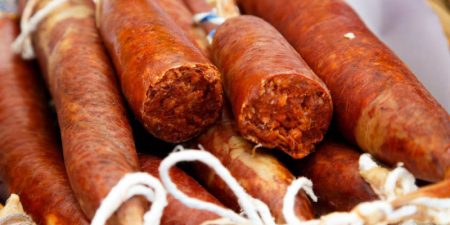
Support Local
Supporting local communities during your travels can have a profound impact. Stock up with groceries locally, stop in an artisan shop or enjoy a refreshment at a restaurant or bar. Now more than ever, these small businesses need support from travelers near and far.
Get to know the area of Maria de la Salut
About the area of Maria de la Salut
Llubí is a municipality located in the region of Pla de Mallorca, the most plain part of the island of Mallorca. The municipality extends over a surface of 3.489,19 hectares of land, whereof 195,24 hectares are protected. The population comprises about 2.250 inhabitants (2018).
History of Maria de la Salut
The first vestiges of human occupation in the area date from the Pre-Talayotic era (2,400 – 1,100 BC). From this era, the funerary caves of Set Pilars and the habitation caves of Caseta des Garriguer in the Montblanc area some of the best examples that has been found. In addition to these caves, more than 20 archaeological sites has been excavated, they are all scattered all over in the municipality.
From the Talayotic era (1,100 – 300 BC), we can see the walled constructions of la Pleta des Pujolet and conjunt del Velar, as well as the ses Rotes Noves de Montblanc.It is quite possible that some of the houses or properties in the municipality are built or planted on top of Talayotic settlements, such as the one of es Pujol and es Deulosa.
Unfortunately, most archaeological sites are in poor condition in the municipality due to the exploitation of the lands for agriculture that has been the main industry since the early Middle Ages. It is believed that the Talayot of ses Tarragones has been a part of a much bigger settlement.
From the times when Mallorca was part of the Roman empire (123 BC – 435 AD), remains such as amphorae and imperial ceramics has been found by the Torre de na Gil as evidence. But also imperial coins supports the theory that an entire Roman village had been here.
During the Islamic dominance of Mallorca, Maria de la Salut belonged under the district of Muruh, which also included Santa Margalida, Muro and Llubí. Not much information has been found in regards to the Arabic presence in this area, although all archaeologists and ethnologists agree that the Arabs were indeed here. Water tunnels (qanats), wells and ceramics are clear evidence of Arabic presence, moreover, many of these has been found in the same places as founds from the Roman era which suggests a reuse of constructions. Water engineering such as those of sa Gruta de Roqueta, s´hort dén Vico, la font des Pujol, are all constructions from this period.
The Arabs lived farms in tribe-like communities, or in small clans. They cultivated almonds, olives, rice, grapes and cereals, all edibles that still this day are known as basic ingredients in an Arabic diet.
Following the conquest of Mallorca (1229 – 1232), King Jaume I of Aragón divided and distributed the lands and districts amongst participants and supporters of the campaign. All areas were declared in the Libre de Repatiment (Book of Distribution). The area of Maria de la Salut was given to Ponç Hug, count of Empúries (former distric on the sea side of Catalonia)
In the late 13th century, two important estates were built in the area; Maria and Roqueta. The estate of Maria, embryo of the town, was the home of the count whom collected taxes from new settlers that came from the mainland. New settlers were given very good conditions including land and slaves for fair prices. Until 1259 the estate of Maria was owned by Bernat de Vilanova, who sold it to Guillem Robert, whose family had it until the beginning of the 15th century.
Within the lands of Maria, namely in the local area of Son Puig, a small nucleus of houses started to show up. In 1410 the lands were in the hands of Joan de ses Eres, a pharmaceutical master.
In 1430, the lands of Maria fell in the hands if Ramon Safortesa, who added it to his lands of Santa Margalida. Safortesa quickly gained jurisdiction of the lands allowing him to collect rents and taxes as he pleased.
During the events of the Revolta Forana (1450 – 1453), the small community of Maria took part in the fights against Safortesa, in collaboration with the people of Santa Margalida. However, the Safortesa family continued their massive tax load and dominance of the area of Maria, which at this time was mainly located in the vicinity of the Plaça de Dalt.
Between 1520 and 1523, the conflict once again arose, this time the movement of the Germanies. Guilds of artisans were dissatisfied with living conditions, taxes and rents from the counts and horsemen who owned most of all lands in Mallorca. In those years, blood was shed all over the Mallorcan countryside, as nearly 3,000 men took part in this movement. It ended with interference from the king of Aragón, who sent the royal troops to Mallorca to support the counts and horsemen.
Until the end of the 17th century, the Safortesa family ruled most of Santa Margalida and the areas of Maria. Pedro Safortesa was the last of the successors, known as “the evil count” due to his massive tax loads and mercilessness towards people that didn’t pay in time and enough.
Two names that occurs in history books of Maria de la Salut from the 17th century, are Joan Font Roig and Antoni Quetgles, two men who took part in a riot against count Mal in Santa Margalida. Joan Font Roig was a member of the jury in Santa Margalida and Antoni Quetgles was a simple bandit, both were from Maria. Antoni Quetgles assaulted the mayor of Santa Margalida, employed by count Mal, and Joan Font Roig covered for him while trying to stir up the inhabitants to do resistance. However, the ission failed and the two men were murdered by henchmen of the count.
In 1696, the urban nucleus started to expand, and to the east of Carrer Major the areas of Son Estelat, carrer del Pou, Son Mas, ses Corbades and carrer de s’Arraval started to develop. At this time, there were about 100 houses in the lands of Maria comprising 650 inhabitants.
In 1698, the governor granted permission for the people of Santa Margalida to constitute a council that could deal with litigation in regards to the lands that belonged to the lordof Roqueta. In the beginning of the 18th century, this council needed representatives from Maria, as they were considered impartial.
In 1710, after a royal hearing, the village of Maria was consolidated, thanks to the works of the elected representative in the Santa Margalida town council. In 1718, the first document of regulations was sealed by the town council of Maria and the beginning of the commonwealth.
In 1796, the elected rerepresentatives of Maria, Miquel Gual and Joan Torelló, initiated a long process aimed to have Maria separated from Santa Margalida. Years of struggles past, but eventually, after the reinstatement of liberal governments in the beginning of the 19th century, municipal segregation was finally authorized.
The population steadily increased up through the 19th century, making it necessary to build new houses. In 1931, electricity was introduced, as well as constructions of many other important public facilities.
Practical Info
Useful Numbers
Emergency: 112
National police: 091
Local police: 092
Guarda civil: 062
Fire: 080
Maritime emergencies: 900 202 202
Town Hall: +34 971 52 50 02
Public Transport
Bus lines: 441
Power Supply
220V
